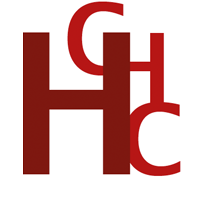Research projects
Storing the past and present: 3D-Documentation and Visualisation of Cultural Heritage
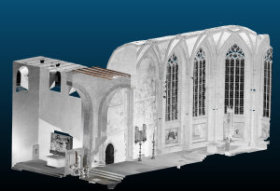 Within two projects in the field of “Digital Heritage” Dr Roland Prien examines the potential of 3D documentation and visualisation of historical buildings and archaeological. In the process buildings and structures are recorded using laser scanners and photogrammetry, and virtually accessible 3D models are created from the combined results. The high-resolution models not only offer the possibilities of digitally preserving cultural heritage, but also allow previously difficult-to-access sites to be made accessible for research and the wider public.
Within two projects in the field of “Digital Heritage” Dr Roland Prien examines the potential of 3D documentation and visualisation of historical buildings and archaeological. In the process buildings and structures are recorded using laser scanners and photogrammetry, and virtually accessible 3D models are created from the combined results. The high-resolution models not only offer the possibilities of digitally preserving cultural heritage, but also allow previously difficult-to-access sites to be made accessible for research and the wider public.
Initial pilot studies have been carried out on Mainz Cathedral and the monastery church of Mittelzell on the World Heritage site Klosterinsel Reichenau.
Städtische Konfrontationen und Moderationen zum Islam: Co-Radikalisierungsprozesse und die Folgen für eine produktive Islamkritik
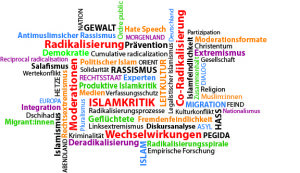 Prof. Dr. Thomas Schmitt und Dr. Ertuğrul Şahin erkunden im Rahmen ihres Vorhabens in einem ersten großen Schritt Wechselwirkungen bzw. mögliche Co-Radikalisierungsprozesse in Stadtgesellschaften, nämlich zwischen anti-muslimischen Gruppierungen und Gruppierungen des radikalen Islam, sowie deren Auswirkung auf weitere Bereiche der Stadtgesellschaft, insbesondere auf auf weitere muslimische Gruppierungen.
Prof. Dr. Thomas Schmitt und Dr. Ertuğrul Şahin erkunden im Rahmen ihres Vorhabens in einem ersten großen Schritt Wechselwirkungen bzw. mögliche Co-Radikalisierungsprozesse in Stadtgesellschaften, nämlich zwischen anti-muslimischen Gruppierungen und Gruppierungen des radikalen Islam, sowie deren Auswirkung auf weitere Bereiche der Stadtgesellschaft, insbesondere auf auf weitere muslimische Gruppierungen.
Das Projekt wird vom Bundesministerium für Bildung und Forschung gefördert und ist Teil des Verbundantrags „Wechselwirkungen islamistischer Radikalisierung im gesellschaftlichen und politischem Kontext“, welches am Erlanger Zentrum für Islam und Recht im Europa (EZIRE) der Universität Erlangen-Nürnberg angesiedelt ist. Weitere Informationen finden Sie hier.
Das Programm ‚Kulturhauptstadt Europas‘ im Spannungsfeld lokal-urbaner und internationaler Kulturpolitiken: eine Beobachtung und Analyse der Debatten und Bewerbungsstrategien deutscher Städte für das Kulturhauptstadtjahr 2025
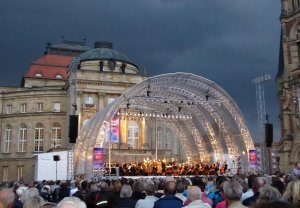
Im Rahmen des von der DFG geförderte Forschungsprojekt begleiten Prof. Dr. Thomas Schmitt und Jonas Lendl, M.A. seit 2017 die Bewerbungsvorbereitungen und den Bewerbungsprozess von Städten im Wettbewerb um den Titel "Kulturhauptstadt Europas" mit sozialwissenschaftlichen Methoden (insbesondere der teilnehmenden Beobachtung und des Expert*inneninterviews).
Das Projekt verfolgt nicht das Ziel einer „Evaluation“ des Wettbewerbs, sondern möchte Aussagen, Analysen und Einordnungen über aktuelle stadt-, kultur- und europapolitische Debatten sowie die Governance des Bewerbungsprozesses erarbeiten.
Weitere Informationen finden Sie hier.
Burg Wersau – A Citizen Science project
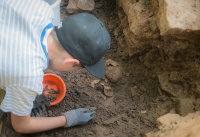 The former castle of Wersau in Reilingen is one of the few lowland castles in the Rhein-Neckar region which are actively being investigated by archaeologists. There is nothing left above ground of this castle, which survived from its founding in the early High Middle Ages up to the 18th century. It served the Electors of the Rhine as a toll castle, a hunting lodge and a winery. Even after the destruction of the castle, the site was continuously occupied up to the end of the 20th century, and was used as a mill, a farm and a residence. It thus looks back on a history covering 800 years.
The former castle of Wersau in Reilingen is one of the few lowland castles in the Rhein-Neckar region which are actively being investigated by archaeologists. There is nothing left above ground of this castle, which survived from its founding in the early High Middle Ages up to the 18th century. It served the Electors of the Rhine as a toll castle, a hunting lodge and a winery. Even after the destruction of the castle, the site was continuously occupied up to the end of the 20th century, and was used as a mill, a farm and a residence. It thus looks back on a history covering 800 years.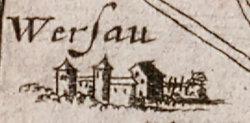
Count Palatine Ruprecht I chose to receive the founding charter of the University of Heidelberg in Burg Wersau in 1386. This shows that it was a place of special importance in the High Middle Ages. The archaeological remains are thus an excellent starting point for throwing new light on the history of the Electoral Palatinate and the role of the almost forgotten lowland castles in the Rhine valley.
With the aid of dedicated volunteeers, and in cooperation with the municipality of Reilingen, the HCCH is conducting research at the site of the former Burg Wersau with the aim of setting up a regional centre for archaeology and local history. The site will be made accessible to the general public with the aid of a tourism development plan.
The German television channel SWR paid a visit to the project and published a short report on it, which you can find here. The participatory approach of the project is also the focus of a documentary entitled "Archaeology für Alle - Partizipative Wissenschaft auf der Burg Wersau", which you can watch below.
Archäologie für Alle - Partizipative Wissenschaft auf der Burg Wersau from Storyloop on Vimeo.
Making hidden cultural heritage visible. The ‘Zullestein’ as an example of the visualization of historical cultural and natural landscapes
Making hidden cultural heritage visible. The ‘Zullestein’ as an example of the visualization of historical cultural and natural landscapes
The Zullestein, in the municipality of Biblis, is one of the most important monuments in the southern part of Hessen. It dates back to a small late Roman fortress (burgus) close to where the Weschnitz enters the Rhine, which was used continuously from Roman to early modern times. In the early Middle Ages, the Zullestein royal estate came into the possession of Lorsch Abbey, which had its Rhine port (portus) and market here. In the Middle Ages, Burg Stein was an important regional seat of power. After excavations in the 1970s, the ruin returned to its lonely existence as a neglected cultural monument in the middle of the Rhine floodplains. Since 2015, the HCCH has been carrying out research at the Zullestein site, in cooperation with the World Heritage site of Lorsch Abbey and hessenARCHÄOLOGIE, the state agency for preservation of monuments in Hessen. The findings will be used to develop a new tourism concept which will draw attention to the site as an important cultural monument both locally and supraregionally.
The new visualization of the late Roman burgus shown below was created as part of a cooperation project carried out in 2019. Details of this project can be found here.
Finished Projects

